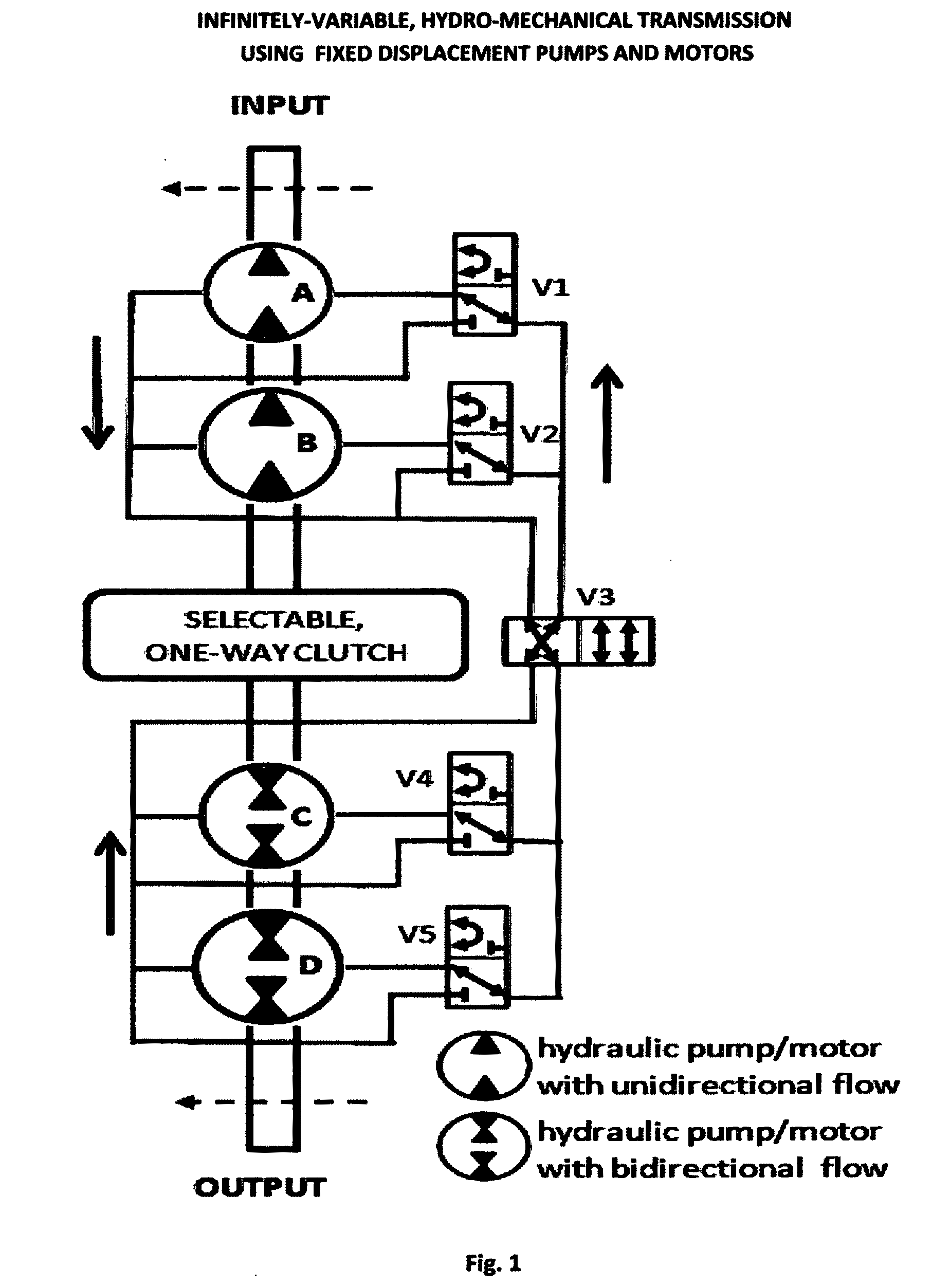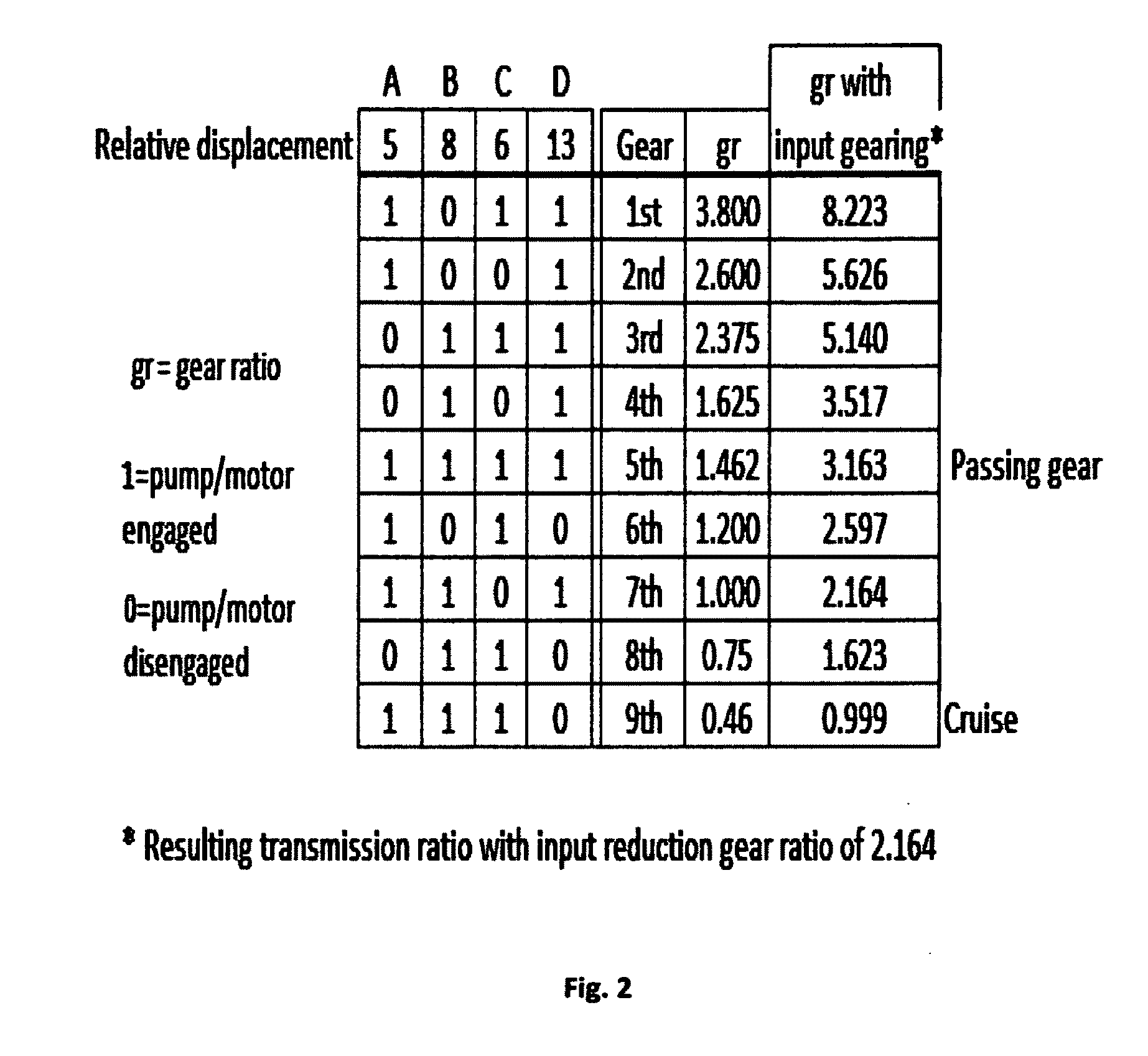Infinitely-variable, hydro-mechanical transmission using fixed displacement pumps and motors
a fixed displacement, hydro-mechanical technology, applied in the direction of fluid couplings, couplings, transportation and packaging, etc., can solve the problems of large power loss, large power loss, and inability to control the speed of the transmission path, so as to reduce the cost of batteries and electrics, handle high power and torque, and infinite variability of vehicles
- Summary
- Abstract
- Description
- Claims
- Application Information
AI Technical Summary
Benefits of technology
Problems solved by technology
Method used
Image
Examples
Embodiment Construction
The example used to describe the basic transmission (FIG. 1) uses two hydraulic devices on the input shaft of the transmission capable of operating either as a pump or a motor and two pump / motors on the output shaft capable of operating with the fluid flow in either direction. With valves V1, V2, V4, and V5 in the position shown, both input devices A and B will pump fluid to motors C and D. The transmission ratio is the input rpm divided by the output rpm. In this case the ratio will equal the total output displacement (D+C) divided by the displacement of (A+B). If, for example, V2 is change to the position that causes the fluid to re-circulate within pump / motor B, the transmission ratio or gear ratio will become (C+D) / A. The chart in FIG. 2 shows all the combinations possible with the relative displacements shown resulting in 9 forward speeds. Changing V3 shift the transmission to reverse, and all the same speeds ranges will result.
It is desirable to have an input speed reduction g...
PUM
 Login to View More
Login to View More Abstract
Description
Claims
Application Information
 Login to View More
Login to View More - R&D
- Intellectual Property
- Life Sciences
- Materials
- Tech Scout
- Unparalleled Data Quality
- Higher Quality Content
- 60% Fewer Hallucinations
Browse by: Latest US Patents, China's latest patents, Technical Efficacy Thesaurus, Application Domain, Technology Topic, Popular Technical Reports.
© 2025 PatSnap. All rights reserved.Legal|Privacy policy|Modern Slavery Act Transparency Statement|Sitemap|About US| Contact US: help@patsnap.com



